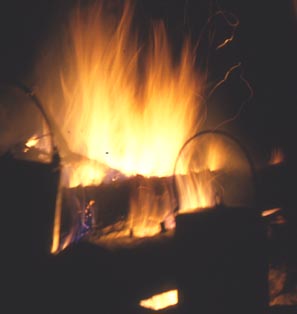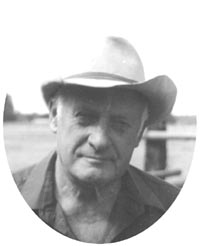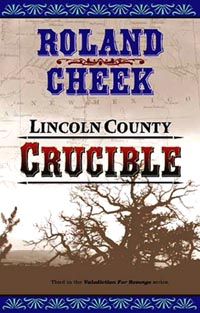a weblog sharing info on outdoor skills and campfire musing by a guy who spends a bunch of time in pursuit of both
CULTURE
WHERE -
TALES ARE TOLD OF
Welcome to Roland Cheek's Weblog
Roland is a gifted writer with a knack for clarifying reality. Looking forward to more of his wisdom
- Carl Hanner e-mail
While still in high school, over fifty years ago, the rumor was that a particularly good-looking girl smoked marijuana. I made a date with her because I wanted to push the envelope and learn more. She didn't smoke any weed that night and, in fact, had me take her home by 10 pm so, I later discovered, she could entertain her evening's 2nd date. The upshot of all the above? A half-century later, I still don't know what marijuana smells like. Nor have I discovered a use for any so-called recreational drug--perhaps because the addiction I acquired was a love for the outdoors. Maybe I'm lucky on so long-ago evening that the girl had another date.
To acess Roland's weblog and column archives
Tip o' the Day
I've slipped in and out of my saddle a few thousand times, so I know it fits. But like most other horsemen, I don't know how to help anyone else find just the right saddle to fit them.
So to learn more about picking a saddle that fits, I asked a fellow whose advice I've respected enormously for well over forty years. Larry Gleason is a retired Ronan saddlemaker who also guided hunters during most of my years spent leading others to adventure in the Bob Marshall Wilderness.
"Find a saddle that fits, huh? Larry said. "Maybe that depends on how much a person plans to use it and what for."
I asked Larry to explain.
"There are three kinds of seats: cantle, center seat, and level seat. In a cantle seat, the front is high and it's deep back by the cantle. Center seats slope to the middle from both pommel and cantle. They're probably best for most people, expecially trail riders. Level seats are mostly for cutting horses, used with forward stirrups."
"How about the old style?" I asked. "High horn and cantle?"
"Again, that might depend on what you're doing with it. A person can get hurt with a tall horn or high cantle if their horse begins plunging around. Tall horns are usually double-dally horns that are for roping. Not much good for anything else. All a rider needs is a horn that's tall enough to get a good grip on."
"How about a high versus low cantle?"
"Should be high enough to come up on the buns, but not so high you can't swing in and out easy. Again, a shovel cantle can be a dangerous thing if you're straddling a rank horse. I'd say not over a 4-inch cantle."
"What about seat size?" I asked.
"Trees are measured from the base of the horn to the top of the cantle. But how comfortable you sit will also depend on location of swells. If swells are low, it'll spread your legs enough to be uncomfortable. Higher swells might allow you to slip easily into a smaller tree size.
I asked about stirrups?
"Most people say proper riding posture should be to sit erect and comfortable. You should be able to look down past your knees and see the tips of your toes, with the heel lower than the toe. By riding in this manner, most folks will have better leg contact with their horse."
Larry's advice is to buy only good quality saddles with a rawhide or fiberglass tree.
Knowing what the answer would be, I still asked about padded seats. The old saddlemaker stared steadily at me for several moments, then said, "Next quesion."
Thanks, Jane. I'm really enjoying Roland's stories -- this one about three travelers in the Bob with a wheelchair was amazing! / email from Fran Brinkley
* * *
Love your books. They are so much better than Louis L'Amour's / email from Josh Richmond
* * *
I found it. I liked it. And I sent a copy to Major Mitchell / email from Pat Nipper
EVERY DAY SHOULD BE MOTHER'S DAY
She found every reason to stroll along the high bank overlooking the river's broad flood plain. Or sit against a big yellow pine at the edge of that high bank and stare out across the rocks of that vast bottom. Or stand wistfully gazing out from that high bank. And why not? She's a mother. Her eldest son and his friend were backpacking somewhere upstream and might be hiking past where we camped. It's possible they could even be on their way right now!
Never mind that her son was out of college and embarked on a career in a city several hundred miles from this wilderness. Never mind that her son was now thirty years old, big and strong and every inch a man. Never mind that he'd already backpacked through the Bob Marshall during several previous adventures--Alice still worried about him. After all, she's a mother.
Earlier, the woman had spent several hours going through our packboxes, sorting our own food supplies to see what we might spare in order to replenish her son's middle-of-the-wilderness larder. Now she's waiting; like mothers are wont to wait for their offspring.
"I wonder where they could possibly be?" she asked for the hundredth time, coming back to the sputtering campfire for a cup of coffee.
Her husband chuckled and said, "Mommy, he's doing just fine, whether they happen to come this way or not."
"Oh, I know," she replied, then returned to stroll along the bank, constantly casting eyes upriver. After all, she's a mother. And mothers never know for sure about their sons or daughters--even if they say they do--unless they can see them and touch them and somehow show their love in clearly definable ways. Not even so much as a mouse moved across that flood plain during Alice's constant daylight-to-dark watch; certainly not a big six-foot, two-inch hunk that she fretted over--though she said she did not.
That's the way it went on the first day of Alice's watch. It was halfway through day two when we heard the mother shout and saw her wild mother's wave. "RON! RON! UP HERE!"
Ron and his friend soon stood at our camp. Ron's mom gave one of Larry's and my carefully rationed beers to each young backpacker, and tried to talk them into taking the food she'd meticulously set aside.
"Why?" Ron asked. "We brought along plenty of our own for this trip. Why should we pack out some of yours? After all, you're the ones with the horses."
No the young guys wouldn't think of staying for dinner, either. No, they didn't need to send anything out of the wilderness on our empty packhorses. "Mom," Ron said, perhaps embarrassed by the attention, "we don't need anything. Really."
Ron's mother smiled and said, "Okay." But one didn't need a crystal ball to tell that it wasn't really okay because she's his mother and how can he really be okay if she can't take care of him?
The boys left. Alice watched them shoulder their backpacks and stride away downriver. She stood watching where they'd disappeared until the sun sank behind the western horizon. Her arms were folded, eyes shining with a little pride and a lot of love.
Oh yes, did I mention her big smile?
And why not? She's a mother!
Roland Cheek wrote a syndicated outdoors column (Wild Trails and Tall Tales) for 21 years. The column was carried in 17 daily and weekly newspapers in two states. In addition, he scripted and broadcast a daily radio show (Trails to Outdoor Adventure) that aired on 75 stations from the Atlantic seaboard to the Pacific Ocean. He's also written upwards of 200 magazine articles and 12 fiction and nonfiction books. For more on Roland, visit:
www.rolandcheek.com
Recent Weblogs
Tuesday, May 5,2009
for more info about these and other Roland Cheek books
There's a bunch of specific info about Roland's books, columns, archives and radio programs. By clicking on the button to the right, or below left, one can see Roland's synopsis of each book, read reviews, and even access the first chapter of each of his titles. With Roland's books, there's no reason to buy a "pig in a poke."
for detailed info about each of Roland's books
Read Reviews
Read their first chapters
For interested educators, this weblog is especially applicable for use in outdoor / nature classes, as well as for journalism students.
Roland, of course, visits schools. For more information on his program alternatives, go to:
Books 2 & 3 are set amid New Mexico's violent Lincoln County War
Book four in the Valediction For Revenge series, Gunnar's Mine, is set in Colorado mining country, as is the sixth and final book in the series, The Silver Yoke
Book five in the series is Crisis On the Stinkingwater. The book is set in Wyoming, around present-day Cody, in what is now called the Shoshone River Country
I knew you were a good writer, but I never before put you in the class of Michener and Clancy. You spin a good yarn and don't let it drop for a minute. You handle dialogue extremely well, and the action scenes are outstanding. You have no reason to venture so carefully into the world of novelists.
- Jack Oliver / Pittsburgh, PA
Next Week:
MAY DANGERS!
www.campfireculture.com
to send this weblog to a friend
to tell Roland what you think of his Campfire Culture weblog
source links for additional info
to visit Roland's newspaper columns and weblog archives








